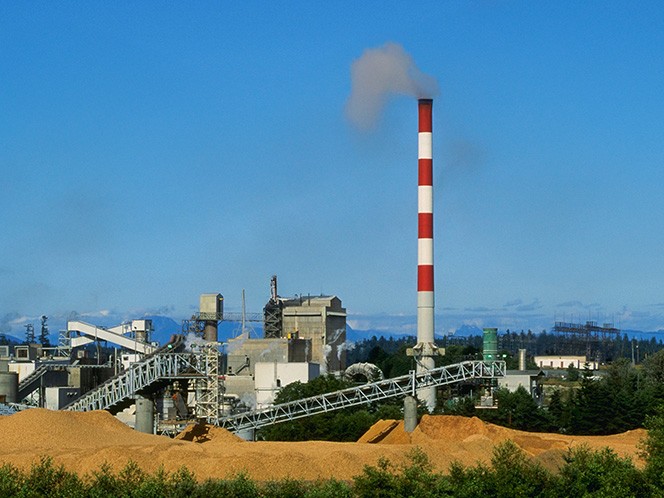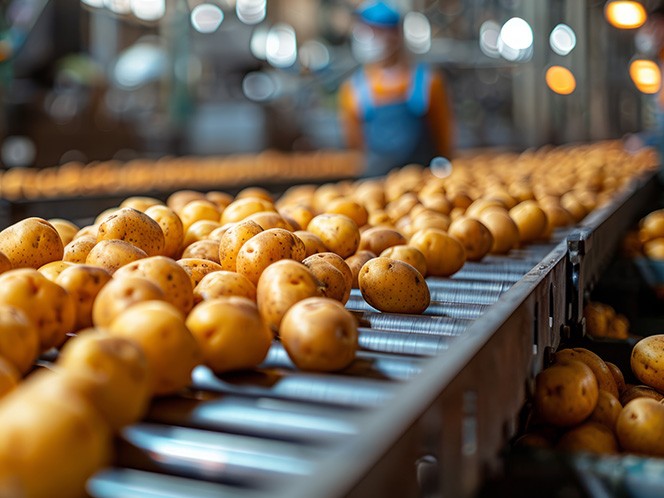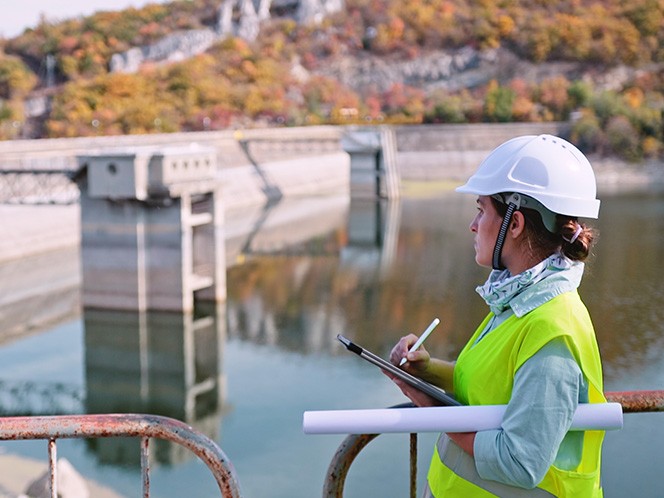Resource wise: Data-driven solutions to cut industrial water use
Posted: August 07, 2025
Industrial water use accounts for roughly 20% of global water withdrawals, and in many regions supply is already outpacing demand.[1] About half the world’s population experiences water scarcity for at least part of the year.[2] Over the past twenty years, terrestrial water storage—in soil, snow, and ice—has dropped about 1cm annually.[3] Experts expect that climate change will only make the issue more dire, and the need for solutions more urgent.
Water scarcity poses obvious challenges for human and natural ecosystems, but it should concern business leaders across industrial sectors just as much. It's not just a matter of environmental responsibility; reducing water use is also a practical business imperative. From cutting costs to building operational resilience, the benefits of data-driven water efficiency extend far beyond conservation alone:
- Cost savings: Reducing water use lowers utility bills, not just for water itself, but also for the energy required to pump, treat, heat and/or cool it.
- Operational resilience: Water is essential to countless industrial processes across sectors, and water shortages can quickly bring operations to a halt.
- Regulatory and compliance pressure: Governments around the world are tightening rules on water withdrawal, discharge quality, and usage reporting, making proactive efficiency critical to avoiding fines and securing permits.
- Brand integrity: Responsible water use is increasingly important to retail partners and the public at large, and poor water stewardship can damage brand trust and lead to public backlash.
There’s no one-size-fits-all solution to industrial water efficiency, but across industries, companies are finding smart, data-driven ways to make meaningful reductions. Here’s how three organizations did it, with three distinct approaches, each powered by AVEVA.
Ence: Harnessing data to predict, monitor, and save water
In the north of the Iberian Peninsula, frequent and severe droughts have made water an increasingly scarce resource, which presents pressing challenges to companies across industrial sectors. For Ence Energía & Celulosa, Europe’s leading eucalyptus pulp producer and Spain’s leading biomass operator, this growing scarcity threatened both the reliability of its operations and its ambitious sustainability goals.
Ence leveraged its existing AVEVA™ PI System™ data infrastructure to unlock deeper insight and control over water usage across its pulp mills. By using AVEVA™ PI Server’s asset framework and event frame features combined with AVEVA™ PI Vision™ for real-time visualization, the company developed a monitoring and control solution to contextualize its water data. The result is a comprehensive report of all Ence’s water usage data and trends, which gives the team greater control of its consumption to better meet the resource challenges of the moment.

Ence also integrated AVEVA PI System data with machine learning algorithms that integrate flow meter, historical rainfall data, as well as data from official weather stations to predict the flow of the river that feeds their pulp mill facilities. These forecasts, visualized via AVEVA PI Vision dashboards, help the company plan water use more efficiently and adapt to changing environmental conditions. In the summer of 2023, before Ence’s new system was in place, the pulp mills saw a total of fifteen days of downtime due to water shortages. The summer after deployment, that figure dropped to zero.
Branston: Turning wastewater into a resource with smart recycling
It takes water to grow a potato, sure, but it also takes considerable water to process a potato for retail sale. At its South West UK site, potato supplier Branston faced growing pressure to cut water usage in its cleaning and packaging operations. To meet the environmental expectations of major retailers and reduce reliance on new water inputs, Branston needed a smarter, data-driven way to recycle and manage its wash water.
Working with automation partners, Branston deployed a membrane bioreactor water treatment plant, which it monitors and controls using a suite of AVEVA solutions, including AVEVA™ System Platform, AVEVA™ InTouch HMI, and AVEVA™ Historian. The system provides real-time visibility into water treatment, with centralized trend displays available to all users onsite and remotely via web browser. These detailed trends have proven critical not just for real-time monitoring, but also for fine-tuning the treatment process and quickly diagnosing issues. Engineers can now analyze events to identify root causes and prioritize improvements.

This modern, centralized system, accessible across roles and work sites, has drastically streamlined development and support. Branston reports a 90% reduction in engineering call-outs, enabling staff to run the plant independently. Today, Branston recycles 90% of wash water, and, within just a few months of go-live, cut its mains water usage was by a dramatic 52%.
Gwinnett County: Breaking down data silos to boost water efficiency
Of course, for water and wastewater utilities, water isn’t just part of the process; it’s the whole objective. The Gwinnett County Department of Water Resources faced a challenge common to water utilities around the world: abundant operational data scattered across its water treatment plants (six plants in all), all stored in outdated, siloed systems, which impeded on-the-spot decision-making. The utility needed a new approach that unified its water production data so operators, engineers, scientists, and even other county departments could access critical information anytime, anywhere.
With AVEVA’s help and systems integrator MR Systems, Gwinnett County deployed AVEVA™ Operations Control, a hybrid cloud subscription that combines process visualization, collaboration and digital knowledge sharing, advanced analytics, operational shift and regulatory reporting, with the power AI and machine learning. The new system aggregates real-time and historical data across sites and delivers it securely via the cloud. The hybrid approach ensures each facility maintains local control while enabling remote data access and collaboration across the organization.

With advanced analytics powered by AVEVA™ Insight, Gwinnett’s operators can now identify water loss, optimize pump scheduling, and reduce unnecessary equipment wear wherever they may be working. By reducing pump backwash times, the county saves 120 million gallons of water every year, plus approximately $35,000 in energy costs per plant.
The resource efficiency ripple effect
The water savings in the stories above come with cost savings, but they also often entail energy savings. It’s an important reminder: When you reduce the use of one type of resource through enhanced operational efficiency, you’re probably reducing the use of other resources at the same time. A beverage plant that cuts rinse water not only saves on water bills, but also on the energy needed to pump and heat that water. Or, when a manufacturer reduces off-spec product, it not only avoids raw material loss, but also saves the water and energy it took to mix, heat, or cool that now-scrapped batch. And when a plant optimizes its energy use (say by improving heat recovery) it doesn’t just lower utility bills; it also reduces cooling water demand and eases strain on boilers, chillers, and compressors.
All that to say, reducing resource consumption is a holistic endeavor. Savings here almost always amount to savings elsewhere, and resource inefficiency in one aspect of a business can easily ripple outward.
This is the first entry in our three-part blog series, Resource wise, on reducing resource consumption. Check back in the weeks ahead to learn how leading industrial businesses are pioneering innovative, data-driven strategies to do more while using less—less water, less energy, less raw material, and less manpower.
[1] UNESCO World Water Assessment Programme. (2024). The United Nations World Water Development Report 2024: Water for prosperity and peace. UNESCO. https://www.unesco.org/reports/wwdr/en/
[2] United Nations. (n.d.). Water – At the center of the climate crisis. United Nations. Retrieved June 19, 2025, from https://www.un.org/en/climatechange/science/climate-issues/water
[3] Ibid
Related Blog Posts
Stay in the know: Keep up to date on the latest happenings around the industry.